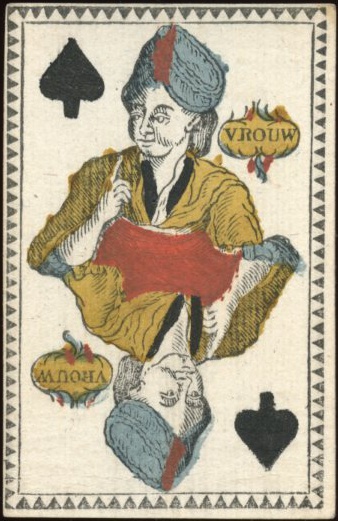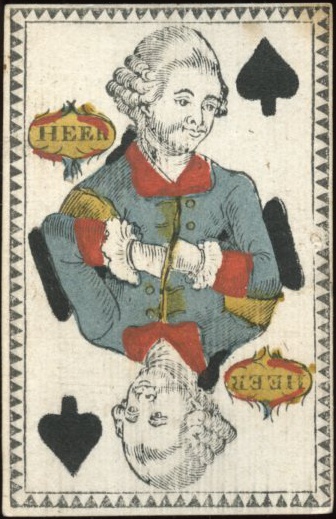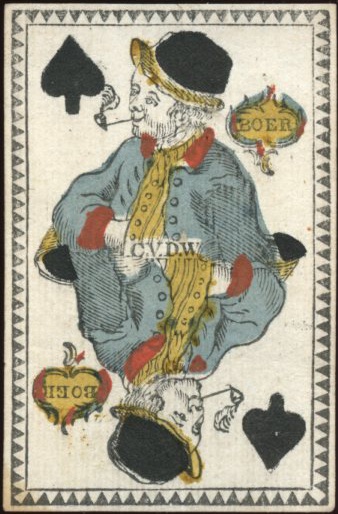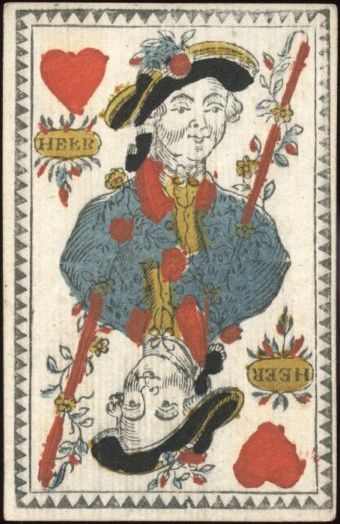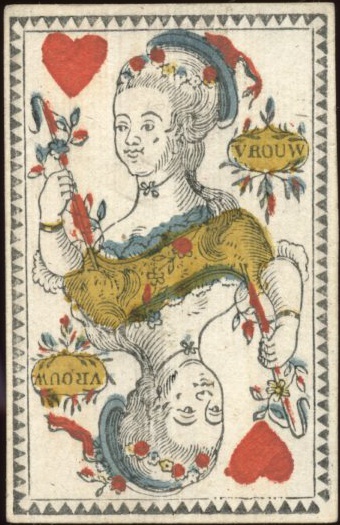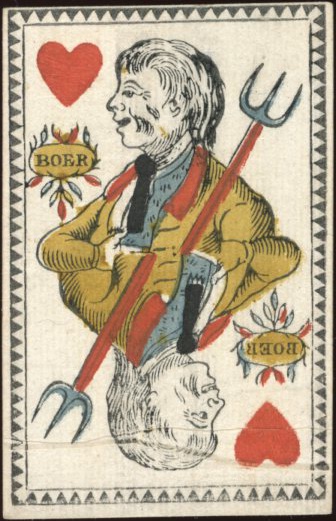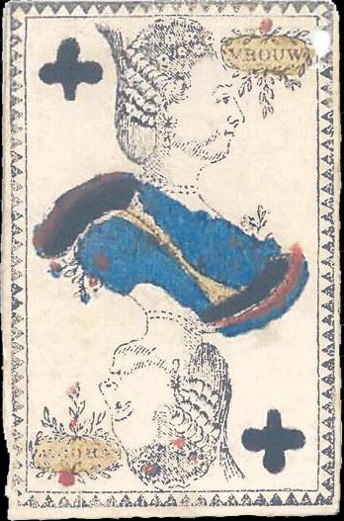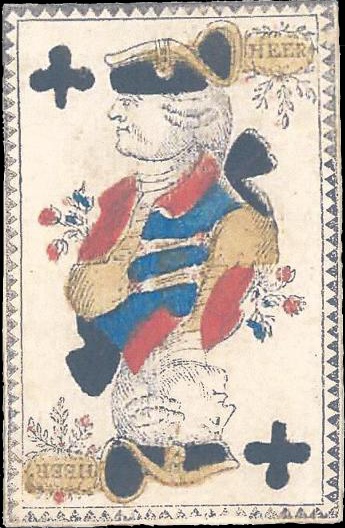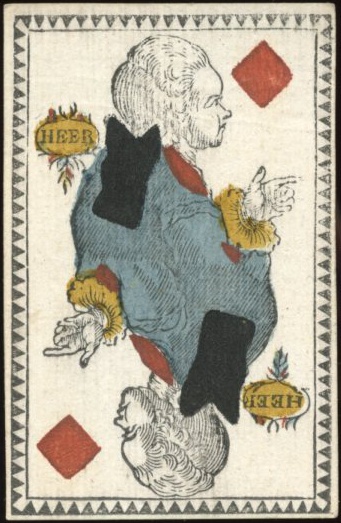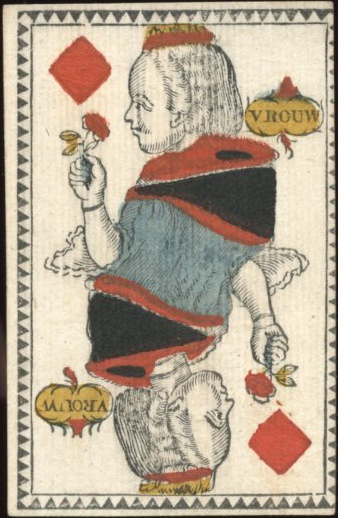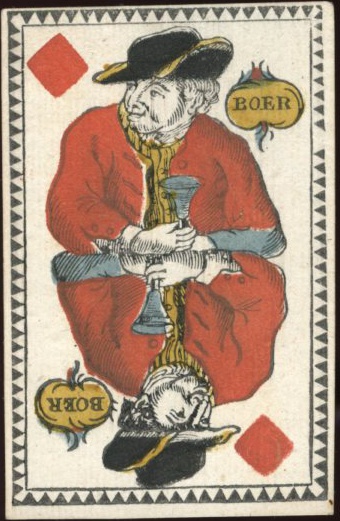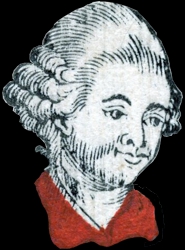 |
July
2023
|
|
|
The package came earlier than expected. It
contained the 4 decks that I had won in the Dominic Winter auction of
decks from the Dudley Ollis collection. I was pleased with all of them,
but there was only one deck that was the reason to participate in the
auction. It was a "pandoer" version, usually 33 cards, but
there were 2 court cards missing. However, for me still worth buying.
And... this deck will stay in my reduced, but select collection. |
I've loved this deck ever since I first saw
pictures of it when I began building the Dutch speelkaartenmuseum.nl site in
2011. It's
not a coincidence that the chosen pictured card there for a link to the pre-1900
section is the jack of clubs from this deck. There are a few features in the
deck that attracted me. Foremost...... it's a nonstandard deck.
Then there's the egalitarian character of the courts. No kings or queens, but
"heer" (gentleman) and "vrouw" (woman). The jacks are called
"boer" (farmer). Here they are fully spelled out, but this egalitarian
idea has survived the passed centuries and today Dutch indices are still H, V
and B. Contrary to the nowadays in the Netherlands predominant Cartamundi
version of the Dutch pattern, in which the H's show kings, each "Heer"
in this deck shows an upper- or middleclass gentleman.
The printed outline around the designs can be called simple, but certainly
remarkable for those days. Four colours were used for the stenciling, of which
red and black were also used for the pip cards. And the combination with the
grayish blue and ochre yellow suits the eye, at least mine.
The
deck was printed by woodblock and the cards were stencil coloured. From the
information provided by Lex Rijnen, a long time Dutch collector and expert on
antique Dutch playing cards, it's clear that it leaves room for questions. But
what is known is that David Weege
was active as a bookseller and publisher in Amsterdam between 1748 and 1787. So
he didn't print the decks himself. From an advertisement in the Amsterdamsche
Courant
newspaper
of December 24, 1768, it is known that David Weege had his decks printed in
Belgium in those days. Weege refers there to "the main card maker in
Brussels" and "for the general and lesser quality cards" to Namen.
But mentions that it concerns "all kinds of Brussels playing cards",
so probably standard patterned decks.
He had already set up his shop at two different addresses in Amsterdam before he
moved to the Kalverstraat in 1770 and called his shop "In de Luthersche
Bijbel" (In the Lutheran Bible). Playing cards were no longer mentioned
after this move until they reappeared in his sales offer in 1776. After his
daughter had married a Dutch playing card maker named Jan Stroek, an advertisement
in the A.C. of 29-01-1771 announced that D. Weege had partnered up with J.
Stroek on January 1st 1771 and that per May 1st they would sell their paper work
and pencils from a shop, located at the Nieuwendijk. The name Stroek has appeared
in some of the Weege decks. However, not in this deck. The cooperation
with Stroek ended in 1786.
So it's difficult to put an exact year on this deck. It could be from the early
1770's, but most likely from around 1780. However,
I haven't finished researching, still browsing through 18th century newspapers
searching for more background info on Weege as well as Stroek.
On
the jack of spades the initials C.V.D.W. are printed. The D.W. refers to David
Weege, but I haven't been able to find a reference for the C.V. It could refer
to the card manufacturer, but also to the woodblock cutter. The shown courts and
aces on the speelkaartenmuseum.nl site come from an incomplete deck of 48 cards
in the collection of the Koninklijk Oudheidkundig Genootschap (Royal Society of
Antiquities). I have contacted the K.O.G., but due to the holiday season will
have to wait until halfway August for answers. But their deck did have
the 2 courts that are missing in my deck: the Heer and Vrouw of clubs. So their
pictures here below were taken from the K.O.G. deck.
Scanned
at 150% to show more detail. Cards measure 57 x 88 mm.
ENJOY!
Each
ace is differently decorated.
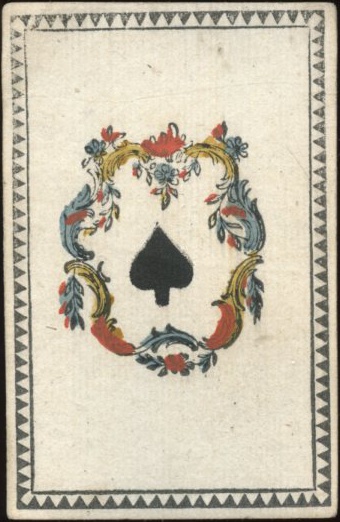
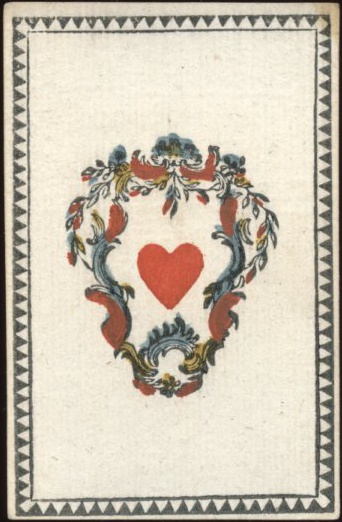
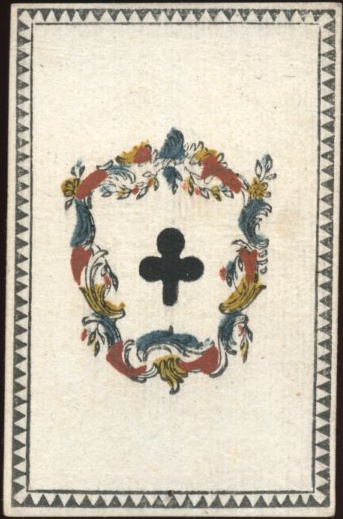
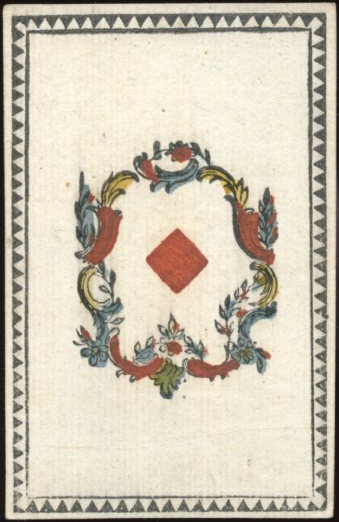
| To play the
game of "pandoer" a deck of 33 cards is used: courts, aces and
10-7 in each suit and a 6 of hearts. It's an old Dutch game, probably
named after the mostly Hungarian soldiers in the Seven Year War (1756-1763),
as braveness was supposed to be required in this game too. The first reference to the
game dates from 1826, found in a book describing games which were played
in those days. So the game could be a little older and it is possible
that a Pandoer version was published by Weege too. But it's also
possible, and probably more likely, that one of the previous owners (except Dudley of course) has adapted a 52 cards deck to play Pandoer.
Maybe from an incomplete deck, missing a few lower pip cards, or from a
complete deck by tossing the unused pip cards away. |
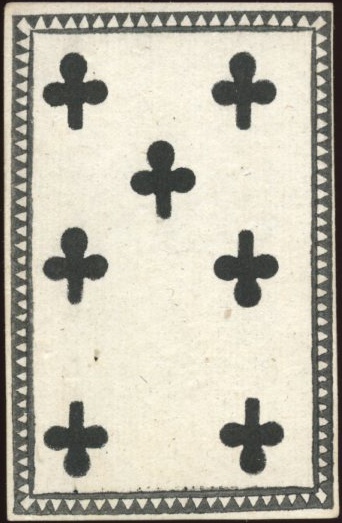 |
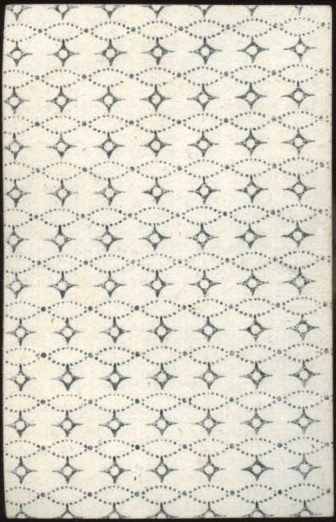
|
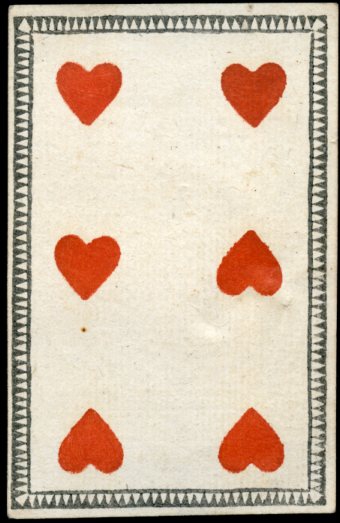
|
BACK
TO PRESENT MONTH

